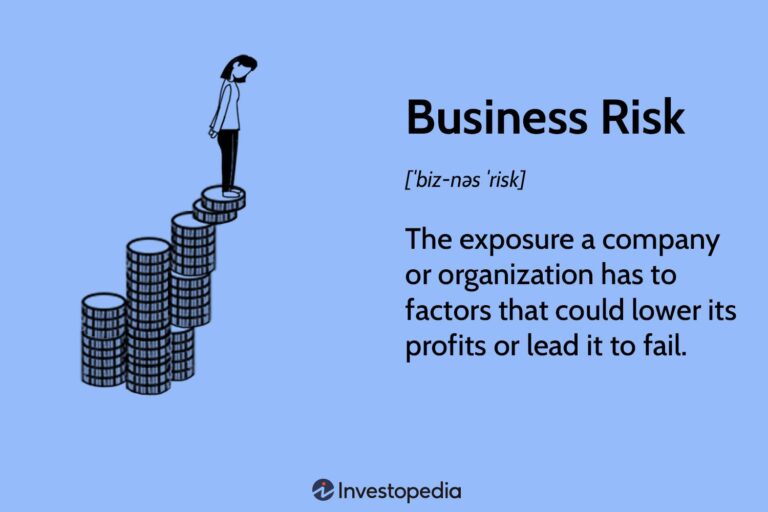How Long Do Most Businesses Last: The Truth about Success
On average, businesses last about 8-½ years, but two out of every three with employees last for about two years. Small businesses often struggle due to startup failure rates caused by various reasons such as product-market fit, poor marketing strategy, cash flow problems, lack of capital, inadequate management team, and unsuccessful marketing initiatives.
This high failure rate signifies the challenges businesses face, emphasizing the need for effective planning and implementation strategies to achieve longevity. With insights into the average lifespan of businesses and common reasons for failure, entrepreneurs can better understand the landscape and make informed decisions to increase their chances of long-term success.

Credit: www.linkedin.com
The Average Lifespan Of Businesses
Running a successful business is a complex endeavor that requires careful planning, smart decision-making, and adaptability. However, not all businesses are fortunate enough to stand the test of time. Understanding the average lifespan of businesses can provide valuable insights into the challenges that entrepreneurs face and help them make more informed decisions.
Factors Affecting Business Lifespan
Several factors can influence the lifespan of a business. Let’s take a look at some of the key factors:
- Product-Market Fit: Having a product or service that meets the needs and desires of the target market is crucial for long-term success.
- Marketing Strategy: A well-formulated and effectively executed marketing strategy can significantly impact a business’s ability to attract and retain customers.
- Cash Flow Management: Maintaining healthy cash flow is essential for covering expenses, investing in growth, and weathering unexpected challenges.
- Competition: Operating in a highly competitive market can make it challenging for businesses to differentiate themselves and stand out.
- Leadership and Management: Competent and visionary leadership, along with a strong management team, are crucial for navigating the complexities of running a business.
Startup Failure Rates
Startups, in particular, face higher failure rates compared to established businesses. According to research, approximately two out of every three startups with employees, will last two years. These statistics highlight the challenging nature of starting a new business and the steep competition faced in the early stages.
Common Reasons For Small Business Failure
Small businesses, in general, are susceptible to failure due to various reasons. Some common reasons include:
- Lack of Capital: Insufficient funding and cash flow problems often cause small businesses to struggle.
- Inadequate Management Team: A lack of skilled and experienced individuals in key management roles can hinder a business’s growth and success.
- Faulty Infrastructure or Business Model: Flaws in the business’s infrastructure or outdated business models can lead to inefficiencies and hinder adaptation to changing market dynamics.
- Unsuccessful Marketing Initiatives: Poorly executed marketing campaigns can result in low customer engagement and limited sales.

Credit: www.amazon.com
Statistics On Business Lifespan
Understanding the lifespan of businesses is crucial for entrepreneurs and investors alike. As the business landscape continues to evolve, examining statistical data on the survival rates of businesses provides valuable insights and benchmarks for strategic decision-making. Let’s delve into the statistics provided by prominent sources such as JPMorgan Chase Institute, U.S. Bureau of Labor Statistics, and Nav Small Business Statistics.
Data From Jpmorgan Chase Institute
The JPMorgan Chase Institute’s research reveals that the average lifespan of a small business is approximately 8 and a half years, providing a tangible metric for evaluating entrepreneurial longevity. This data serves as a testament to the tenacity and resilience of small business owners.
U.s. Bureau Of Labor Statistics
According to the U.S. Bureau of Labor Statistics, approximately two out of every three businesses with employees will endure beyond the critical two-year mark. This statistic underscores the challenges faced by new businesses in navigating the initial stages and achieving sustainability.
Small Business Statistics – Nav
Nav’s Small Business Statistics further corroborates the insights from JPMorgan Chase Institute and the U.S. Bureau of Labor Statistics, indicating that the majority of small businesses have the potential to thrive for over 8 years on average. This longevity metric offers a positive outlook for small business owners and prospective entrepreneurs.
Industries With The Highest Failure Rates
Understanding the average lifespan of businesses can shed light on the challenges that entrepreneurs face within specific industries. As such, it is essential to explore the industries with the highest failure rates to gain insight into the factors contributing to the survival or demise of businesses.
Transportation
The transportation industry is characterized by fierce competition, high operating costs, and regulatory challenges. These factors, combined with volatile fuel prices and increasing maintenance expenses, contribute to the high failure rate within this sector.
Construction
In the construction industry, businesses often grapple with significant financial risks, project complexities, and labor shortages. Coupled with intense competition and economic downturns, construction companies face substantial hurdles that lead to a heightened failure rate.
Warehousing
Warehouse businesses are susceptible to inventory management challenges, rising real estate costs, and the need to adopt advanced logistics technologies. Additionally, the reliance on efficient supply chain management further compounds the pressure on warehousing businesses, contributing to their elevated failure rates.
Why Some Businesses Outlast Others
Many businesses have a short lifespan, with failure rates being quite high in the first few years. However, there are certain factors that contribute to the success and long-lasting nature of some businesses. Understanding these factors can help entrepreneurs and business owners improve their chances of building a sustainable and profitable venture.
Success Factors For Long-lasting Businesses
- Product-market fit: One of the most significant factors for the longevity of a business is its ability to offer products or services that meet the needs and desires of its target market.
- Effective marketing strategy: A well-formulated and implemented marketing strategy plays a crucial role in attracting and retaining customers over the long term.
- Strong financial management: Businesses that have a solid financial foundation, with proper cash flow management and access to capital when needed, have a better chance of surviving and thriving.
- Quality leadership and management team: An inadequate management team can hinder the growth and sustainability of a business. Having competent leaders who can make informed decisions and adapt to challenges is essential.
Comparison To Big Companies
While big companies often have more resources and a longer track record, they are not immune to failure. In fact, many large corporations have fallen victim to market disruption and failed to adapt to changing consumer demands.
Smaller businesses, on the other hand, have the advantage of being more nimble and agile. They can quickly respond to market trends and adjust their strategies accordingly, giving them a better chance of outlasting their larger counterparts.
The Role Of Adaptability
Adaptability is a key characteristic of successful businesses that can stand the test of time. Being able to identify and respond to changes in the market, technology, and consumer behavior is crucial for long-term survival.
Businesses that fail to adapt risk becoming obsolete and losing their competitive edge. It is vital to continuously evaluate the market landscape, monitor industry trends, and make strategic adjustments to stay relevant and meet the evolving needs of customers.
Tips For Business Longevity
When it comes to maintaining a successful business, longevity is a key factor. Many businesses fail within their first few years, but with proper strategies and planning, you can ensure your business stands the test of time. In this article, we will discuss some essential tips for business longevity.
Effective Marketing Strategies
One of the most crucial aspects of business longevity is implementing effective marketing strategies. Marketing helps create brand awareness, attract new customers, and retain existing ones. To maximize the success of your marketing efforts, consider the following:
- Develop a comprehensive marketing plan that aligns with your business goals and target audience.
- Utilize digital marketing channels, such as social media, email marketing, and search engine optimization (SEO), to reach a wider audience.
- Analyze and track the results of your marketing campaigns to optimize your strategies and allocate resources effectively.
- Stay updated with the latest marketing trends and technologies to stay ahead of the competition.
Financial Management And Cash Flow
Proper financial management and maintaining a healthy cash flow are crucial for business longevity. Consider the following tips:
- Develop a realistic budget and stick to it. Regularly review and adjust your financial plan as necessary.
- Ensure timely and accurate bookkeeping to track your income, expenses, and cash flow.
- Manage your business finances efficiently by reducing unnecessary expenses and optimizing revenue streams.
- Build an emergency fund to handle unexpected expenses and economic downturns.
- Consider working with a financial advisor or accountant to gain expert insights and advice.
Building A Strong Infrastructure
Building a strong infrastructure is vital for the long-term success of your business. Here are some key aspects to focus on:
- Develop a solid business plan that outlines your goals, strategies, and operational processes.
- Invest in robust technology and systems that automate processes, enhance productivity, and improve customer experience.
- Build a strong team by hiring talented professionals and providing ongoing training and development opportunities.
- Create a positive work culture and foster employee engagement and satisfaction.
- Regularly evaluate and optimize your business processes to ensure efficiency and effectiveness.
By implementing effective marketing strategies, maintaining strong financial management, and building a robust infrastructure, you can increase the likelihood of your business lasting for many years to come.

Credit: m.facebook.com
Conclusion
The average lifespan of most businesses is around eight and a half years. However, the longevity of a business depends on several factors such as product-market fit, marketing strategy, cash flow management, and the availability of capital. Small businesses often face challenges such as inadequate funds, ineffective management, and unsuccessful marketing initiatives, which contribute to their failure.
It is crucial for entrepreneurs to understand these challenges and implement strategies to mitigate risks and ensure the sustainability of their businesses in the ever-changing business landscape.



